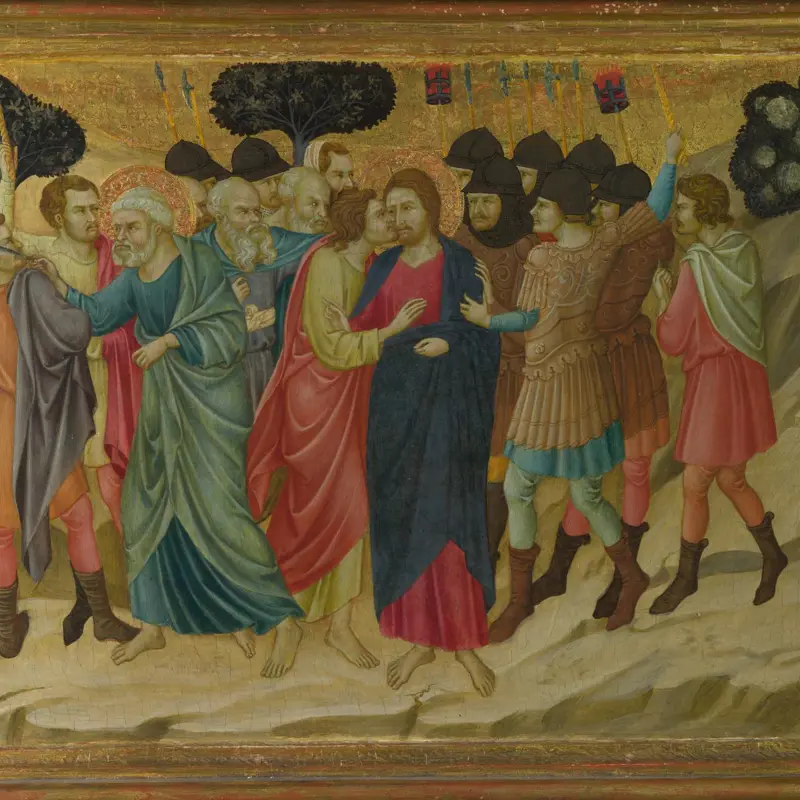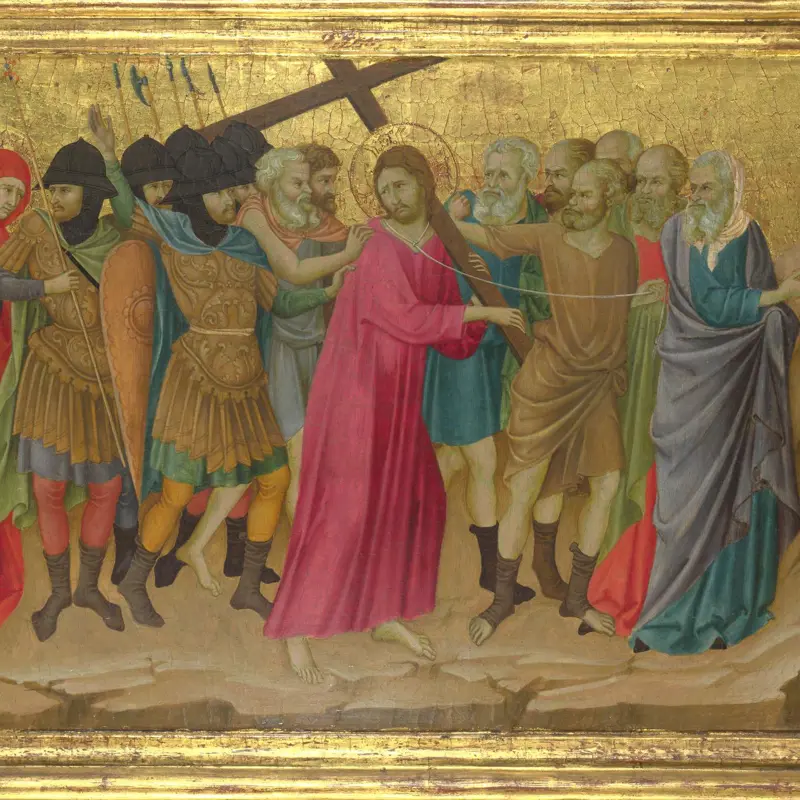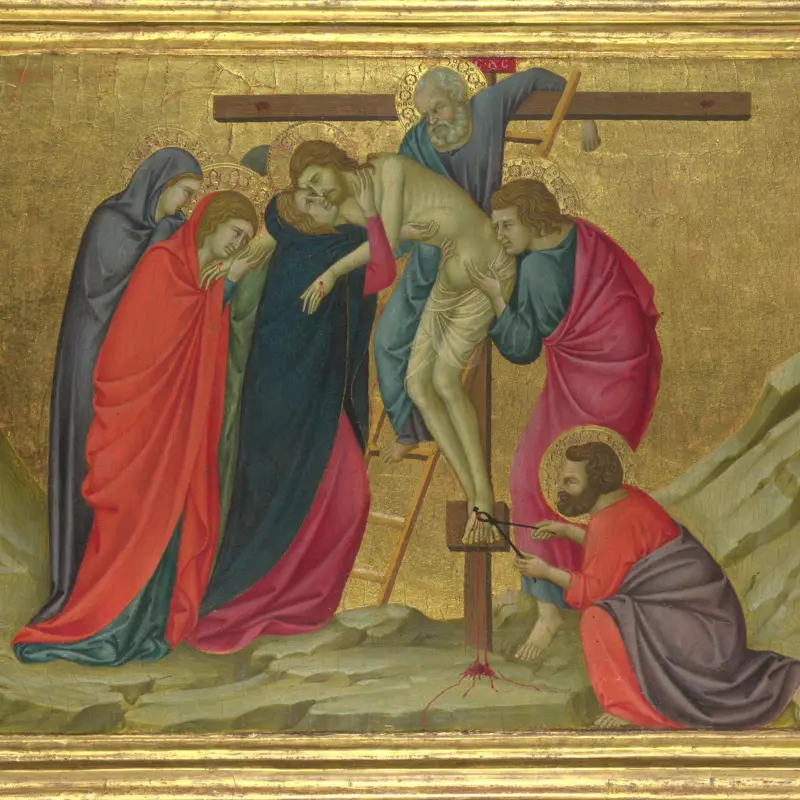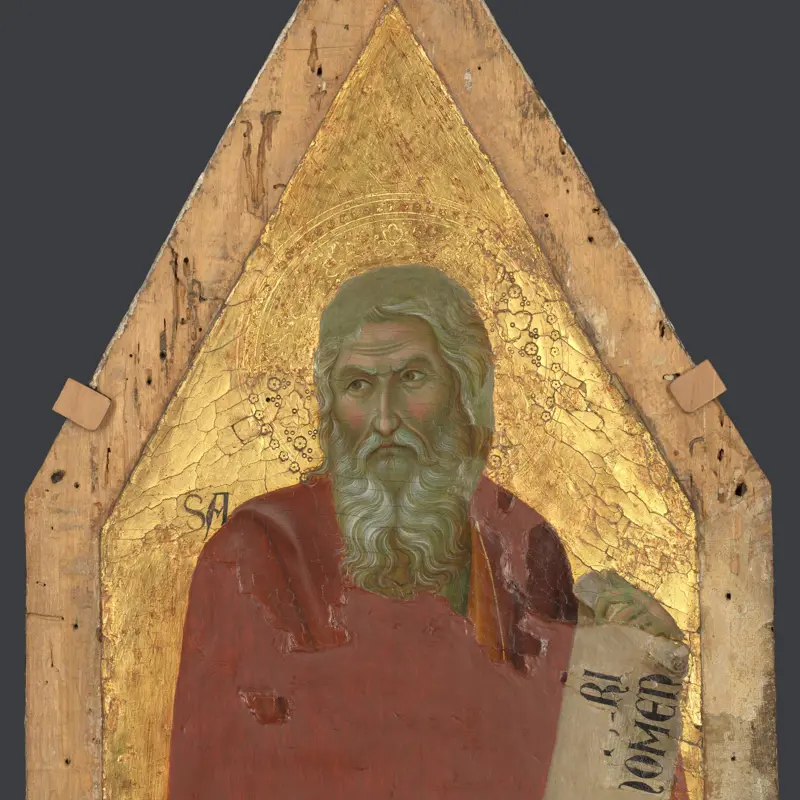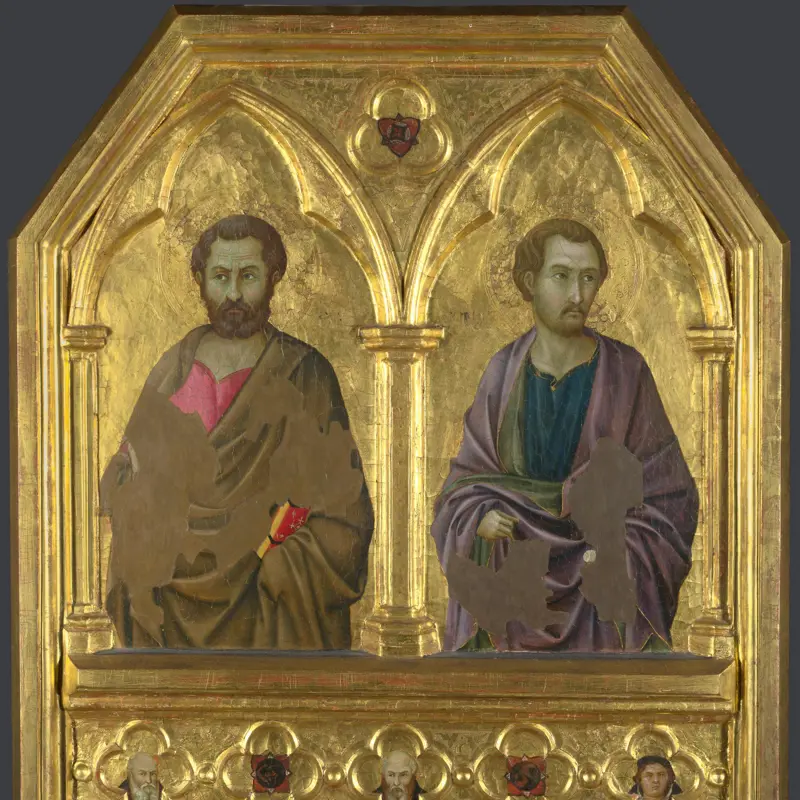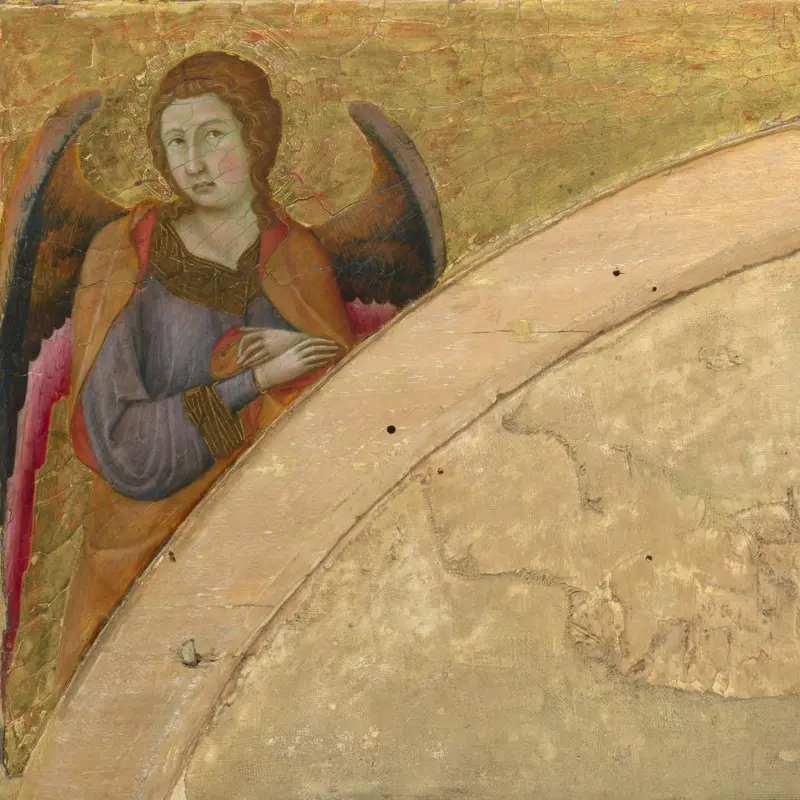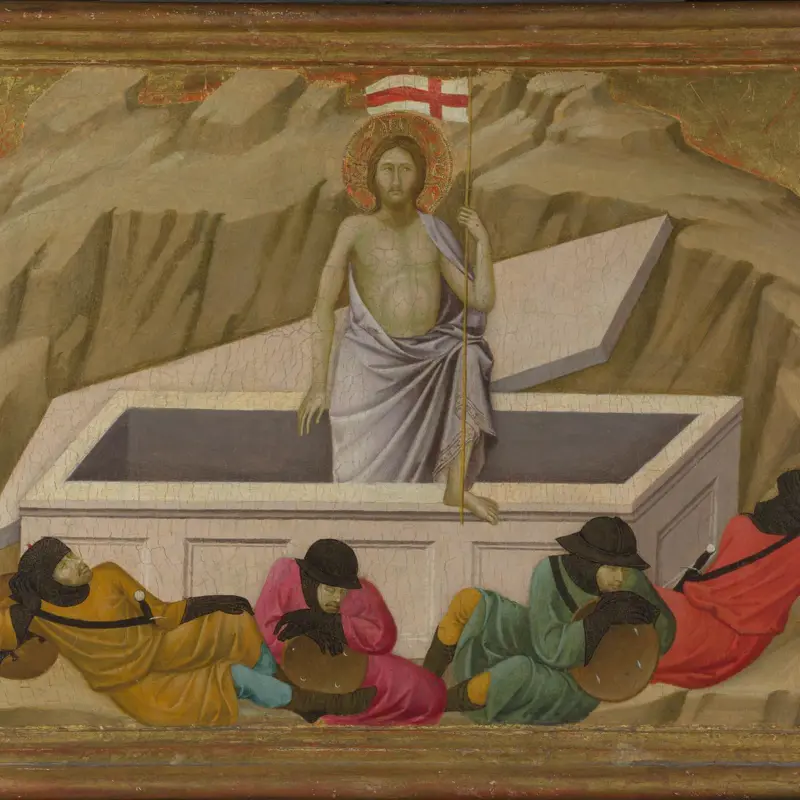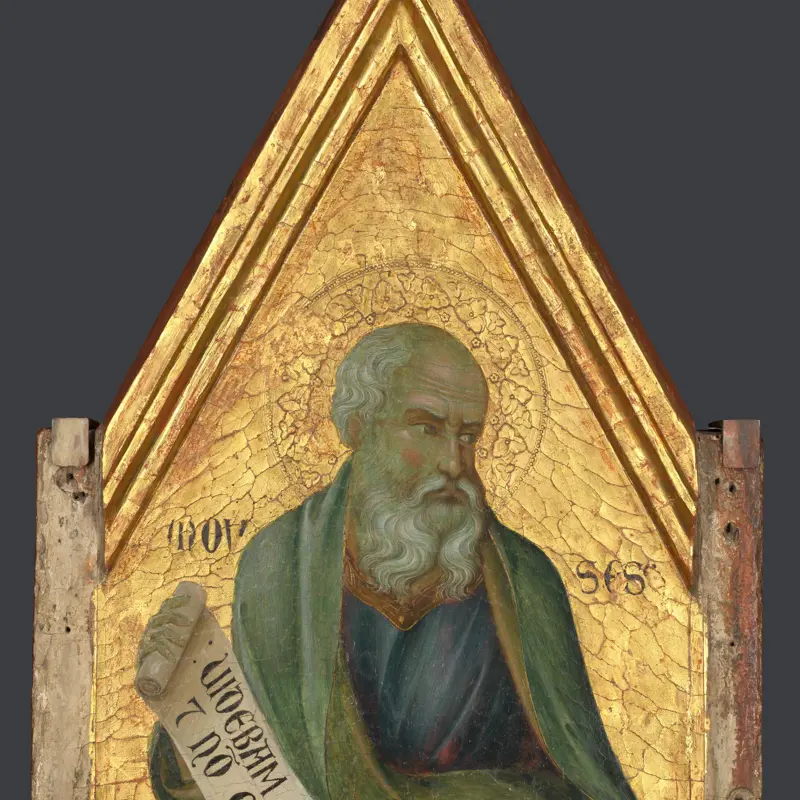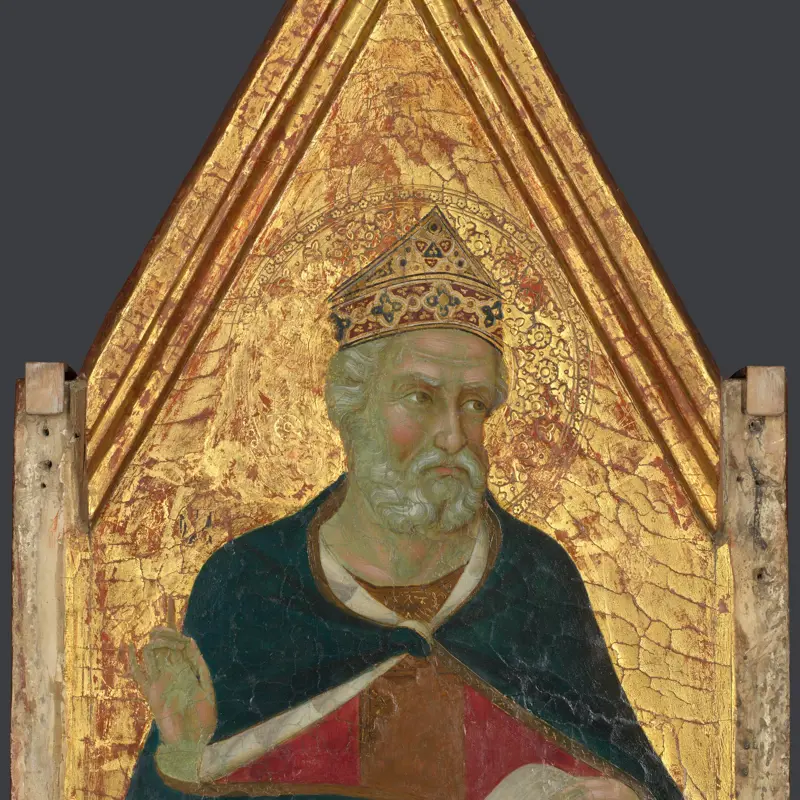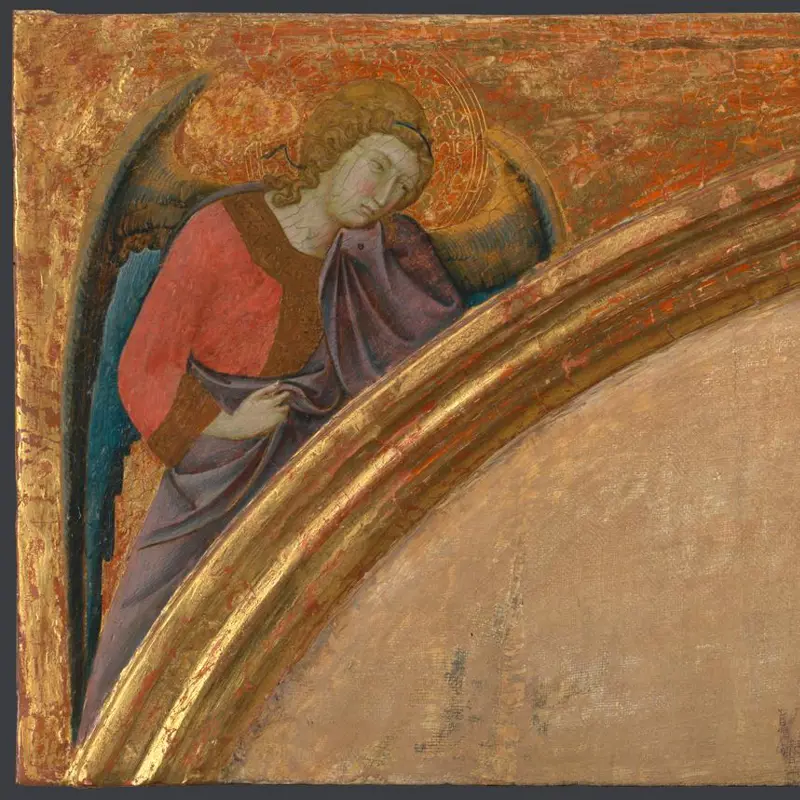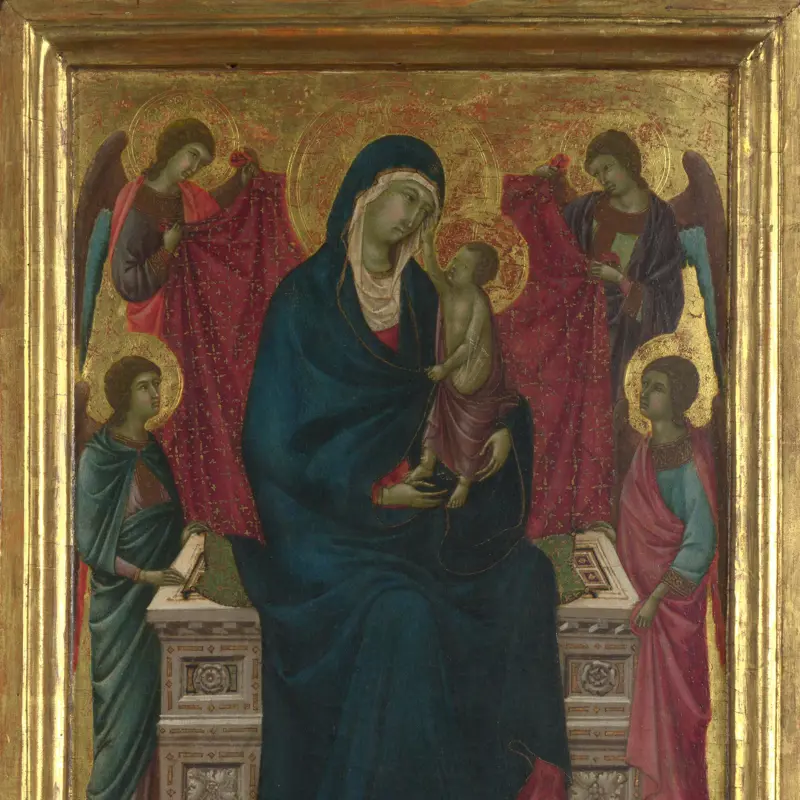Ugolino di Nerio, 'Saints Simon and Thaddeus', possibly 1325-8
About the work
Overview
This panel was once part of a multi-panelled altarpiece made for the Florentine church of Santa Croce. The altarpiece had four tiers of pictures; this would have appeared in the third.
An inscription, now quite faded and damaged, identifies the saint wearing a violet drapery: S.THA. (Saint Thaddeus). You can just see it to the left of his halo. Nothing remains of the inscription that named the other saint, but it is likely to be Simon – the altarpiece features the Twelve Apostles, and he is the only one not identifiable elsewhere.
The decorative shapes (quatrefoils) that run beneath the two apostles show two bearded older men and one younger man, beardless and quite plump. We don't know their identities, but they might be friars from the Franciscan Order who lived at Santa Croce. The portraits are interspersed with more abstract images of animals – a bird to the left and some kind of imaginary two-legged monster on the right.
Key facts
Details
- Full title
- Saints Simon and Thaddeus
- Artist
- Ugolino di Nerio
- Artist dates
- Documented 1317-27; died possibly 1329
- Part of the series
- The Santa Croce Altarpiece
- Date made
- Possibly 1325-8
- Medium and support
- Egg tempera on wood (probably poplar)
- Dimensions
- 70.4 × 62.2 cm
- Acquisition credit
- Presented by Henry Wagner, 1919
- Inventory number
- NG3377
- Location
- Room 58
- Collection
- Main Collection
- Previous owners
- Frame
- 14th-century Sienese Frame with Later Interventions (original frame)
Provenance
Additional information
Text extracted from the ‘Provenance’ section of the catalogue entry in Dillian Gordon, ‘National Gallery Catalogues: The Italian Paintings before 1400’, London 2011; for further information, see the full catalogue entry.
Bibliography
-
1878Royal Academy of Arts, Exhibition of Works by the Old Masters, and by Deceased Masters of the British School: Including a Special Selection from the Works of the Principal Representatives of the Norwich School, London 1878
-
1904A.A. de Pass, Exhibition of Pictures of the School of Siena and Examples of the Minor Arts of that City (exh. cat. Siena, 1904), Siena 1904
-
1945R.C. Witt, Exhibition in Honour of Sir Robert Witt, CBE, D. LITT, FSA, of the Principal Acquisitions made for the Nation through the N.A.C.F (exh. cat. The National Gallery, London, 23 November 1945 - 5 January 1946), London 1945
-
1951Davies, Martin, National Gallery Catalogues: The Earlier Italian Schools, London 1951
-
1986Davies, Martin, National Gallery Catalogues: The Earlier Italian Schools, revised edn, London 1986
-
1988Gordon, Dillian, National Gallery Catalogues: The Early Italian Schools before 1400, revised edn, London 1988
-
2001
C. Baker and T. Henry, The National Gallery: Complete Illustrated Catalogue, London 2001
-
2011Gordon, Dillian, National Gallery Catalogues: The Italian Paintings before 1400, London 2011
About this record
If you know more about this work or have spotted an error, please contact us. Please note that exhibition histories are listed from 2009 onwards. Bibliographies may not be complete; more comprehensive information is available in the National Gallery Library.
Images
About the series: The Santa Croce Altarpiece
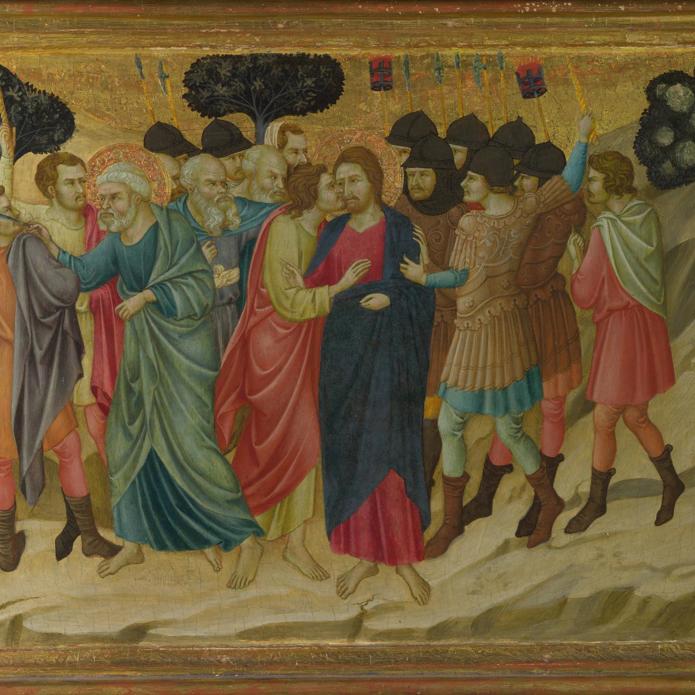
Overview
These panels were once part of a large altarpiece which adorned the high altar of the church of Santa Croce in Florence. It focused on the Passion of Christ (his torture and crucifixion) and the Resurrection – an appropriate theme, as the church was dedicated to the Holy Cross.
Drawings made in the late eighteenth century show how it was arranged originally. There were four tiers of images: the main tier had a central image of the Virgin and Child flanked by images of the saints within arches, which were decorated with angels (there are two sets of these in the National Gallery’s collection).
Above was a row of saints framed in pairs; we hold two pairs. The uppermost tier consisted of six pinnacle panels, three on either side of a central image which probably showed the Crucifixion, itself topped by an image of Christ making a blessing gesture. The predella (the lowest layer) consisted of seven scenes showing Christ’s suffering and death; we have four of these.

